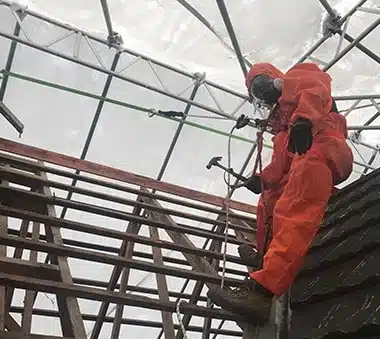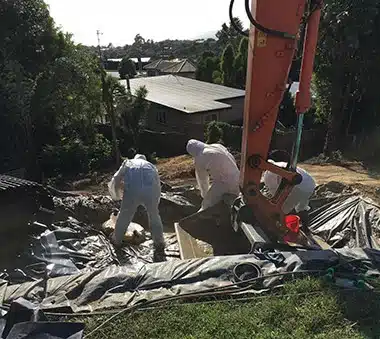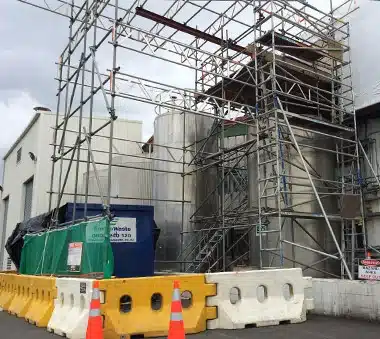ASBESTOS SERVICES
Asbestos Testing, Management & Removal
Exposure to asbestos dust and fibres is an important health and environmental issue. We offer a full range of asbestos removal and management services to keep you and your property safe.


Why is Asbestos Dangerous?
Left undisturbed, asbestos is safe – but if it is exposed or damaged, it can be harmful. This is because asbestos is made up of very fine fibres. These fibres, if not controlled, can become airborne and inhaled. Over time, levels of asbestos fibres can build up in our lungs. It can take many years, but eventually, this build up of fibres can lead to a number of serious health concerns including asbestosis and lung cancer.
These health risks are such that the use of asbestos in most building materials is now banned and, in some cases, legislation dictates that it is removed from buildings. All commercial buildings must have an Asbestos Management Plan. The legislation relating to the management of asbestos is contained in the Health and Safety (Asbestos) Regulations 2016.
Where can Asbestos be found?
Asbestos was a popular building material up until the 1990’s because of its exceptional insulating, fire-resistant and reinforcing properties.
Many commercial and residential properties still contain asbestos.
Asbestos in Commercial Buildings
- The centre of fire doors
- Interior and exterior walls
- Flooring, especially lino flooring in wet areas
- Glue used to stick flooring down
- Roofs
- Hot water tanks
- Insulation and lagging
- Gutters and downpipes
- Lift ropes and lift shafts
- Ceilings
- Electrical fuse boards
- Water pipes internally & externally
- Around windows and door frames
- Fencing
- Water pipes
- Soil contamination


Asbestos in Residential Homes
- The walls behind stoves in kitchens
- Interior and exterior walls
- Flooring, especially lino flooring in wet areas
- Glues used to stick flooring down
- Roofs
- Hot water tanks
- Insulation and lagging
- Gutters and downpipes
- Fireplace surrounds and chimneys
- Ceilings Electrical fuse boards
- Water pipes internally and externally
- Around windows and door frames Fencing
- Water pipes
- Soil contamination









